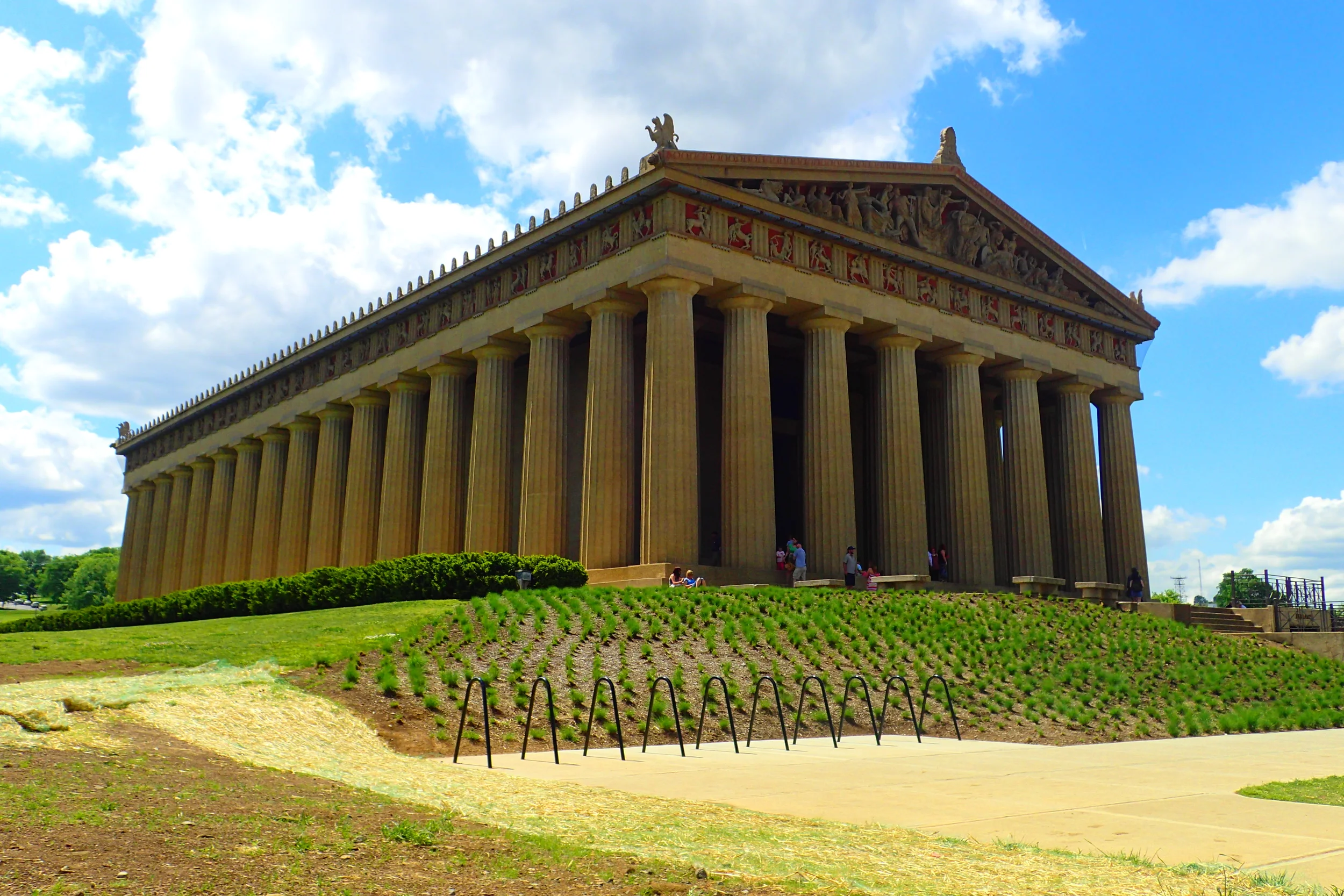The USA continues to surprise me with its natural beauty, innovative architecture, and multiculturalism. The Parthenon and its surrounding park in Nashville, Tennessee are perfect examples of all three of these.
The Parthenon is a replica of ancient Greek ruins still found in Athens today.
But you don't have to fly all the way across the Atlantic to see what remains of it! Head to Music City in the USA and make a detour to Centennial Park to find a replica of the construction as it would have appeared over 2400 years ago.
The Athens of the South
Nashville earned itself the nickname "The Athens of the South" long before the Parthenon replica was constructed.
Ancient Athens was revered for its education. Thus, Nashville's nickname came about by the 1850s because it had the greatest number of higher education institutions in the country. Nashville was also the first of the southern cities to create a public school system.
Tennessee celebrated the 100th anniversary of its entry into the union (the United States) at the 1897 Tennessee Centennial and International Exposition.
For the celebration, they constructed a near-replica of the Ancient Parthenon to symbolize Nashville as "the center of learning and democracy."
The structure was meant to be temporary, but it ended up staying up through 1920 due to its popularity. When it began to crumble, a permanent, full-scale replica was created and reopened to the public in 1931.
The Nashville Parthenon
I photographed my friends after we time traveled back to Ancient Greece. Or is this Nashville...??!!
While the Nashville Parthenon is impressive on the outside, there are also several features of note to be seen on the inside.
During my visit, I entered the building on the lower level and paid a small fee of $6. Then, I entered a hallway describing the history of Nashville's Parthenon and the Parthenon in Ancient Greece.
Following from this hall, I entered an art gallery that takes up the remaining majority of the ground floor. I got to see some awesome fairy tale-inspired modern artwork in this gallery.
Moving upstairs, I found a replica of a statue of Athena that is over 42 feet tall. The original in the Ancient Parthenon in Greece was created by Pheidias who constructed it out of ivory and plates of gold on a wood frame. A Nashvillian named Alan LeQuire sculpted the modern Athena out of gypsum cement and fiberglass on a steel frame—a bit boring by comparison!
Regardless, the statue stands as one intimidating and gorgeous piece of work!
The goddess Nike sits on Athena's right hand at over 6 feet tall. Nike represents victory while Athena is goddess of wisdom, war, and art. The serpent beside her shield is thought to represent the people of Athens whom she protected.
In a room behind the statue are Elgin casts. These are fragments from the Parthenon removed from the Acropolis to England in the early 1800s.
My favorite part of this room is the enormous bronze doors. The bronze doors weigh 7.5 tons each and are 24 feet tall. We experimented with opening and closing them which took a lot of strength!
Every aspect of the Parthenon was impressive and I suppose it had to be since it was the centerpiece of the 1897 celebration!
Centennial Park
The 1897 celebration was held in what is today named Centennial Park. Today, the park surrounding the Parthenon is beautifully landscaped and maintained with colorful flowers, walkways, wildlife, and more.
My friends and I took a long stroll around Lake Watauga in full view of the Parthenon the whole way. There were geese and ducklings and turtles and fish in this lake. The photo opportunities were numerous.
We explored every aspect of the park, including a section where we found a 1942 No. 576 steam engine and a 1949 F-86L Sabre Jet.
I could have spent a lot more time in this park—even after the nearly 2 hours we were there. It paired very nicely with our visit to the Parthenon.
In Conclusion
I have had Greece on my destination bucket list for a while now and I know many other people who do, too.
So it was a wonderful surprise to find that people can see a piece of ancient Greece right here in the United States. Not only is it a piece of ancient Greece, it's a full on replica of it, like being transported into the past.
The Parthenon stands today as the world's one and only full replica of the Ancient Parthenon that was erected in Athens in 438 BC.
So if you're an ancient history buff or if you love to ogle at art and architecture, I encourage you to look into visiting the Parthenon in Nashville. See it even if you've already seen the ruins in Greece—it's worth it!





